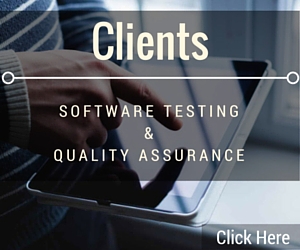The rapid rollout of 5G technology is transforming the mobile landscape, making app testing more critical than ever. 5G technology brings unprecedented speeds and capabilities that change how applications are developed and tested. With 5G, apps can achieve data transfer speeds up to 100 times faster than 4G, with latency reduced to as low as one millisecond. This shift necessitates a new approach to app testing, ensuring that applications function correctly and leverage this advanced network’s full potential.
than ever. 5G technology brings unprecedented speeds and capabilities that change how applications are developed and tested. With 5G, apps can achieve data transfer speeds up to 100 times faster than 4G, with latency reduced to as low as one millisecond. This shift necessitates a new approach to app testing, ensuring that applications function correctly and leverage this advanced network’s full potential.
The Impact of 5G on Mobile App Development
Introducing 5G is not just about enhancing speed; it also opens up new possibilities for app functionality. According to networking executives, 69% consider 5G crucial for business initiatives. This technology allows developers to create more complex applications that can handle high-definition video streaming, augmented reality (AR), and real-time interactions without the lag associated with previous generations of mobile networks.
As mobile applications become more sophisticated, thorough testing becomes imperative. The State of Testing Report 2021 indicates that mobile systems account for 60% of quality assurance efforts in surveyed companies, highlighting the increasing focus on mobile app testing.
Key Challenges in 5G App Testing
- Increased Complexity: The shift to 5G introduces new features and functionalities that complicate the testing process. Applications now need to support AR and virtual reality (VR), which require extensive testing beyond traditional methods.
- Performance Testing: 5G’s high speeds and low latency demand rigorous performance testing under various network conditions. Apps must be evaluated for their ability to perform optimally across 5G implementations.
- Device Compatibility: With over 750 5G-compliant devices available in the market, ensuring compatibility across various devices and network configurations is a significant challenge. As new devices emerge, testing must adapt quickly to maintain performance standards.
Strategies for Effective 5G App Testing
To thrive in this high-speed environment, developers must adopt comprehensive testing strategies that address the unique challenges posed by 5G technology.
- Automated Testing Frameworks: Implementing robust automated testing frameworks is essential for managing the complexities of app testing in a 5G context. Automation can streamline repetitive tasks, improve test coverage, and ensure consistent results across multiple devices and environments.
- Cloud-Based Testing Solutions: Cloud-based platforms allow developers to test applications on a broader range of devices without needing extensive physical hardware. These solutions can simulate real-world network conditions, providing insights into how apps perform under varying circumstances.
- Real-Time Analytics Integration: Incorporating advanced analytics tools into testing frameworks enables real-time data processing and analysis. This capability is crucial for identifying performance bottlenecks and optimizing app functionality before launch.
Performance Optimization for 5G
With the increased capabilities offered by 5G, developers must ensure their applications are optimized for high-speed environments. This may involve revisiting app architecture to manage data transmission efficiently while minimizing resource consumption.
Testing should focus on various aspects of performance:
- Load Times: Apps should load instantly under optimal conditions while performing well in less favorable scenarios.
- Battery Consumption: As apps utilize more data, ensuring they do not drain battery life excessively is critical.
- User Experience: The overall user experience must remain seamless across different network types, including areas with limited or no 5G coverage.
Security Considerations in a 5G World
Security becomes an even greater concern as applications rely more on data transfer through 5G networks. With millions of devices connected via IoT, protecting user data from breaches is paramount. Developers should implement robust security measures such as encryption for data transmissions and thorough security testing before launching any application.
Future-Proofing Your App Testing Strategy
The transition to a fully realized 5G ecosystem will take time. Developers must prepare their applications for a mixed environment where legacy networks and new technologies coexist. This requires:
- Backward Compatibility Testing: Ensuring that apps function correctly on older network types while taking advantage of new features available through 5G.
- Continuous Testing Practices: Adopting agile methodologies that allow for ongoing testing throughout the development process ensures that issues can be addressed promptly.
Conclusion
The advent of 5G technology presents both challenges and opportunities for mobile app development and testing. By embracing advanced testing strategies that include automation, cloud-based solutions, real-time analytics, and security measures, developers can ensure their applications meet current standards and excel in a high-speed mobile environment. As this technology continues to evolve, staying ahead of the curve will be essential for delivering superior user experiences and maintaining competitive advantage in the marketplace.
Beta Breakers is ready to help businesses navigate the complexities of 5G app testing. Our services—including manual and automated testing, performance testing, and compatibility testing—ensure applications are optimized for the high-speed 5G network.
Contact Beta Breakers today to discover how their quality assurance services can help your business thrive in the era of 5G.

 With Experience in Quality Assurance & Testing Desktop Software, Mobile Apps, Websites & Web Applications for Nearly 30 Years, Beta Breakers has become the Premier Software Quality Assurance Labs and Application-Testing Provider -
With Experience in Quality Assurance & Testing Desktop Software, Mobile Apps, Websites & Web Applications for Nearly 30 Years, Beta Breakers has become the Premier Software Quality Assurance Labs and Application-Testing Provider - 
